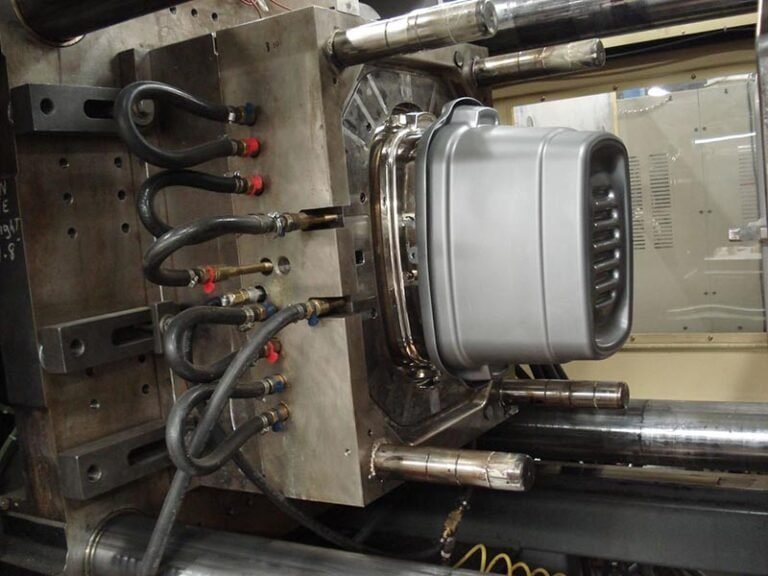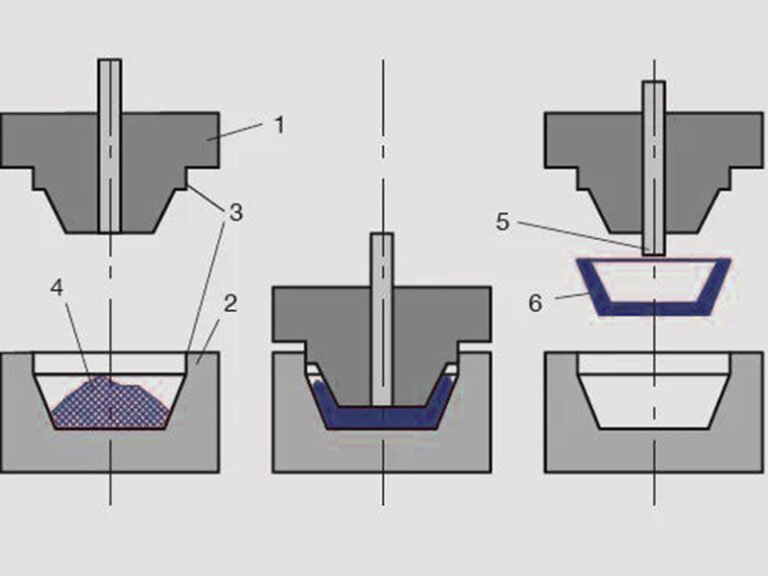Gaskets are very important components in various industries with custom gaskets molding. They are ensuring proper sealing and preventing leaks in machinery and equipment. There are several types of gaskets, each with its own unique properties and applications. In this article, we will explore the different gasket types and applications.
The Common Gaskets Types and Applications
Envelope Gasket Type
Envelope gaskets, also known as filled gaskets or double-jacketed gaskets, are the most common gaskets types, which consist of a soft material enveloped within a metallic or non-metallic covering.
Envelope Gaskets Application: Suitable for applications requiring resistance to high temperatures and pressures, such as in the oil and gas industry.
Flat Metal Gasket Type
Flat metal gaskets are one of the gaskets types that typically made from materials like stainless steel or copper. They are machined to create a flat surface with precise thickness.
Flat Metal Gasket Application: Widely used in flanged connections where high compression is required, such as in heat exchangers and piping systems.
Non-Asbestos Sheet Material Gasket Type
These gaskets are made from non-asbestos materials, offering resistance to heat, chemicals, and pressure.
Non-Asbestos Sheet Material Gasket Application: Commonly used in applications where asbestos-free sealing is necessary, such as in automotive engines and HVAC systems.
Ring Type Joint (RTJ) Gasket Type
RTJ gaskets feature a metallic ring with a hexagonal or octagonal cross-section, providing a reliable seal under high pressure.
RTJ Gaskets Application: Primarily used in oil and gas pipelines, offshore platforms, and high-pressure processing equipment.
Kammprofile Gasket Type
Kammprofile gasket is one of the gaskets types that consist of a solid metal core with serrated concentric grooves on both sides, typically covered with a soft material layer.
Kammprofile Gaskets Application: Suitable for applications requiring high compressibility and resistance to flange rotation, such as in chemical processing and power generation.
Spiral Wound Gasket Type
Spiral wound gaskets comprise alternating layers of metal winding and filler material, typically graphite or PTFE.
Spiral Wound Gasket Applications: Ideal for applications involving high temperature, pressure, and corrosive media, such as in petrochemical and pharmaceutical industries.
Corrugated Metal Gasket Type
Corrugated metal gaskets feature a corrugated profile, providing resilience and adaptability to uneven surfaces.
Corrugated Metal Application: Commonly used in heat exchangers, pumps, and compressors where sealing under fluctuating conditions is required.
Rubber Sheet Material Gasket Type
Rubber sheet material gaskets are made from various elastomers, offering excellent resilience and sealing properties.
Rubber Gasket Molding Application: Widely used in plumbing, HVAC systems, and automotive applications for sealing against water, air, and chemicals.
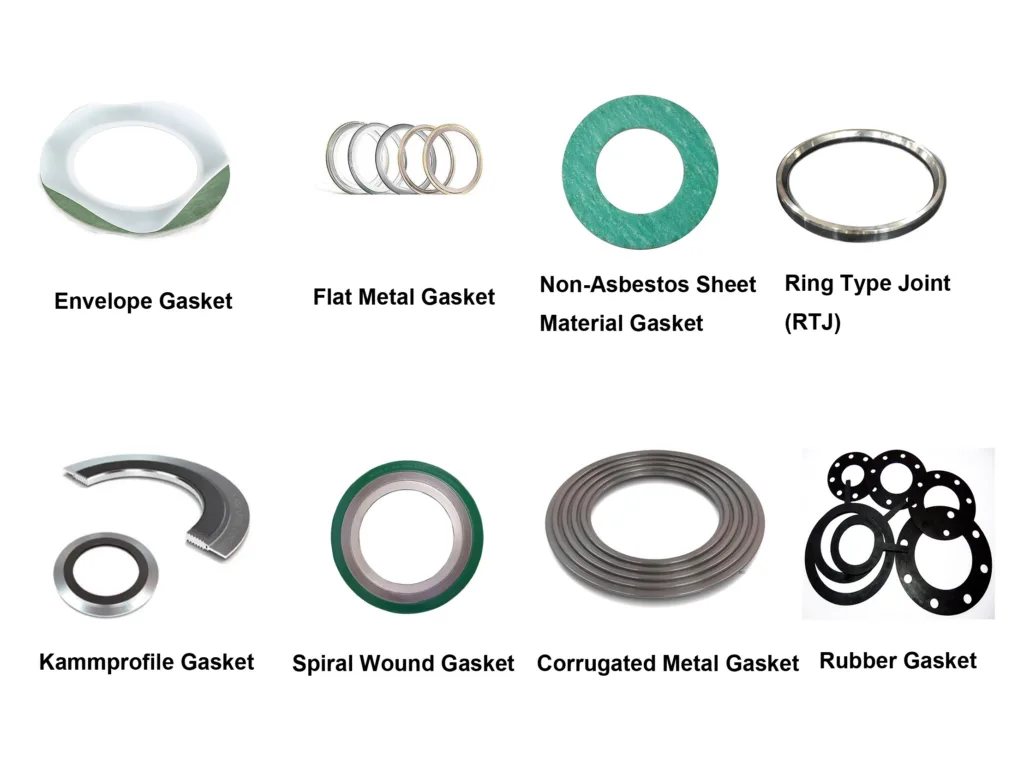
Gaskets Types by Materials
Non-Metallic Gaskets Types
Non-metallic gaskets are made from materials such as rubber, cork, fiber, and elastomers. These materials offer flexibility, resilience, and chemical resistance.
- Rubber Gaskets: Made from natural or synthetic rubber compounds, these gaskets are ideal for sealing against water, air, and moderate pressures. Examples include neoprene, silicone, and EPDM rubber gaskets.
- Cork Gaskets: Composed of cork material, these gaskets are lightweight and compressible, making them suitable for low-pressure applications such as sealing against oils and solvents.
- Fiber Gaskets: Manufactured from materials like paper, felt, or fiberglass, fiber gaskets offer good tensile strength and thermal resistance. They are commonly used in applications involving moderate temperatures and pressures.
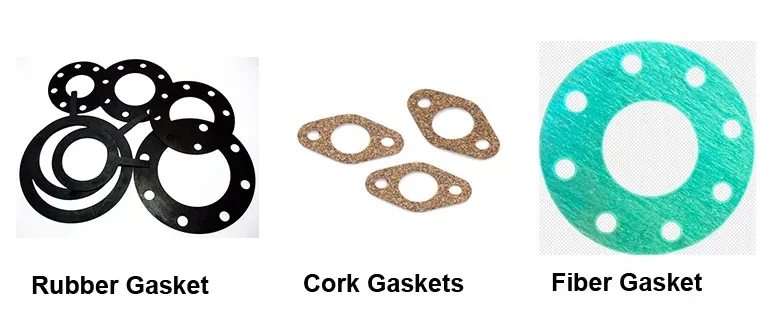
Metallic Gaskets Types
Metallic gaskets are made from various metals or metal alloys, providing superior strength, durability, and resistance to high temperatures and pressures.
- Spiral Wound Gaskets: Constructed from alternating layers of metal winding and filler material (e.g., graphite or PTFE), spiral wound gaskets are versatile and suitable for high-pressure and high-temperature applications.
- Ring Type Joint (RTJ) Gaskets: Featuring a metallic ring with a hexagonal or octagonal cross-section, RTJ gaskets provide a reliable seal under extreme pressures, commonly used in oil and gas industries.
- Metal Jacketed Gaskets: Consisting of a metallic core enveloped by a soft material layer (e.g., graphite or PTFE), metal jacketed gaskets offer enhanced sealing performance in demanding conditions.
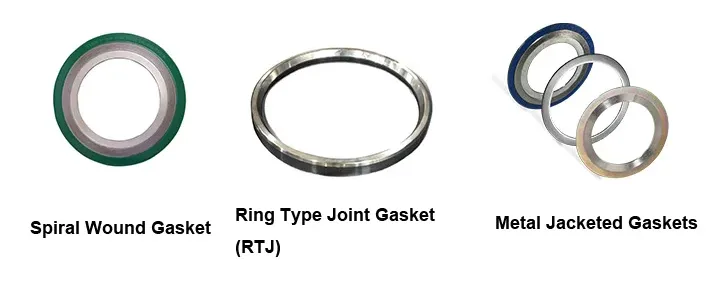
Composite Gaskets Types
Composite gaskets combine materials from both non-metallic and metallic categories to leverage their respective advantages and address specific sealing requirements.
- Kammprofile Gaskets: Featuring a solid metal core with serrated concentric grooves on both sides, covered with a soft material layer, Kammprofile gaskets offer high compressibility and resistance to flange rotation.
- Corrugated Metal Gaskets: With a corrugated profile, these gaskets provide resilience and adaptability to uneven surfaces, commonly used in heat exchanger and high-pressure applications.
Types of Rubber Gaskets by Configuration and Applications
Gaskets come in various configurations to accommodate different flange designs and sealing requirements. There are three common types of gaskets categorized by their configuration: full-face gaskets, IBC (Inner Bolt Circle) gaskets, and segmented gaskets.
Full Face Gasket
Full-face gaskets are designed to cover the entire face of a flange, providing a complete sealing surface between two mating flanges.
Full-face gaskets are typically circular to match the contour of the flange. These gaskets have bolt holes aligned with the bolt holes on the flange for proper alignment during installation.
Full Face Gasket Application: Full-face gaskets are commonly used in applications where a leak-proof seal is required across the entire flange face, such as in piping systems handling corrosive fluids or high-pressure environments.
IBC (Inner Bolt Circle) Gasket
IBC gaskets are designed with a smaller inner diameter compared to the outer diameter of the flange, leaving the bolt circle area exposed.
The inner diameter of IBC gaskets is smaller than the outer diameter of the flange, allowing the gasket to fit within the bolt circle area. The outer diameter of the gasket matches the outer diameter of the flange, providing a sealing surface around the perimeter.
IBC Gaskets Application: IBC gaskets are commonly used in applications where sealing is required only on the raised face portion of the flange, leaving the bolt circle area exposed for ease of bolt installation and alignment.
Segmented Gaskets
Segmented gaskets consist of multiple segments or pieces that are assembled to form a complete sealing ring.
The gasket is divided into several segments, typically three or more, which are assembled around the circumference of the flange. Segments are designed to interlock with each other, ensuring a tight seal when compressed.
Semented Gaskets Application: Segmented gaskets are often used in large-diameter flanges or non-standard flange configurations where a single-piece gasket is impractical. They provide flexibility and ease of installation in challenging sealing environments.
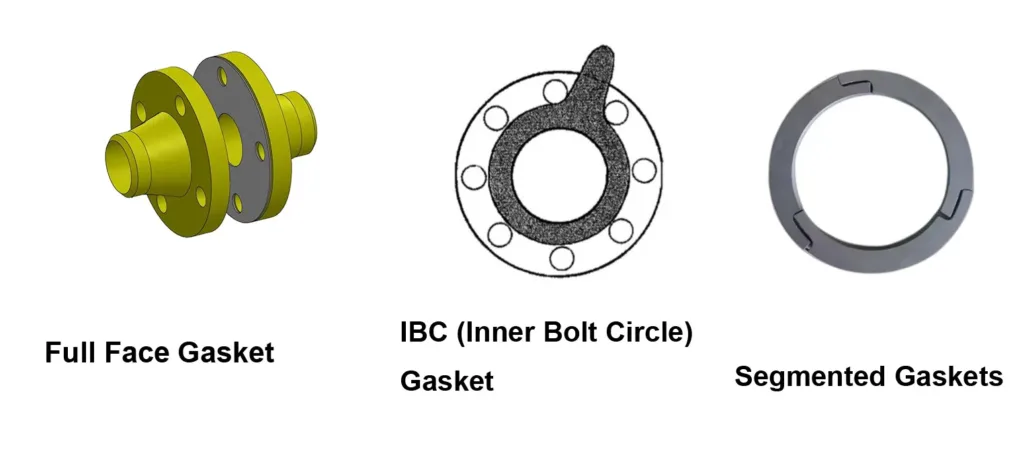
Differences Between a Rubber Gasket and a Rubber Seal:
Learn the custom difference between Rubber gaskets and seals:
- Gaskets: Used between static components to prevent leakage, typically found in non-moving parts like engine blocks. Made from flat materials such as rubber, cork, or metal.
- Seals: Used in dynamic applications where parts move, such as rotating shafts. Designed with features like lips to maintain contact. Found in car engines and hydraulic systems, seals can be made from various materials and shapes.
How to Choose the Right Gasket:
- Application Needs: Match the gasket to the fluids, temperature, and pressure conditions.
Material - Compatibility: Ensure the material suits the media (e.g., some rubbers don’t work with oils).
- Environmental Factors: Consider exposure to chemicals, UV, or extreme temperatures.
Mechanical Properties: Look at compressibility, strength, and flexibility. - Size and Fit: Ensure it fits the surfaces properly.
- Standards: Check for any industry-specific regulations.
- Cost: Factor in both the upfront cost and long-term expenses.
8 Types of Gaskets Conclusion
Gaskets come in various forms and types, each designed to meet specific sealing requirements in different applications. Understanding the characteristics and applications of different gasket types is essential for ensuring efficient and reliable sealing in industrial processes.


